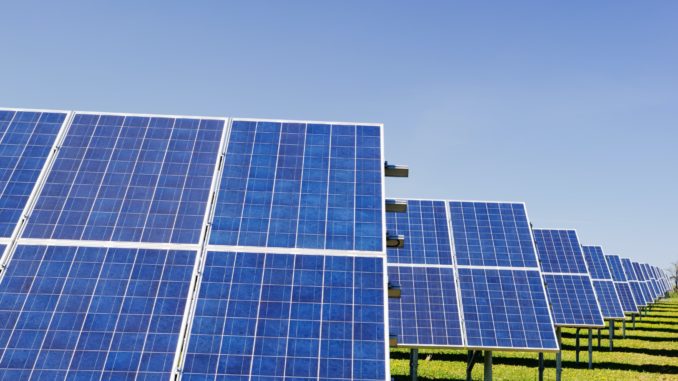
Solar energy is one of the most popular forms of renewable energy and is a clean, sustainable, and abundant source of power. It is generated by converting the energy from the sun into electricity using solar panels.
The process of generating electricity from solar energy is known as photovoltaics (PV). PV cells, also known as solar cells, are made of semiconductor materials such as silicon. When sunlight hits a PV cell, it causes the electrons in the semiconductor material to move, creating an electrical current. This electrical current is then sent to an inverter, which converts the direct current (DC) into alternating current (AC) that can be used to power homes and businesses.
There are two main types of solar energy systems: residential and commercial. Residential solar energy systems are typically used to power homes and small businesses, while commercial solar energy systems are used to power larger buildings and facilities such as factories and warehouses.
Residential solar energy systems can be installed on the roof of a home or in a backyard. They typically consist of solar panels, an inverter, and a battery system. The solar panels convert sunlight into electricity, the inverter converts the DC electricity into AC electricity, and the battery system stores the excess electricity for later use.
Commercial solar energy systems are typically larger than residential systems and are often installed on the rooftops of buildings or on the ground in a solar farm. They can also be integrated into the design of a building, such as with building-integrated photovoltaics (BIPV).
One of the benefits of solar energy is that it is a clean and renewable source of power. It does not produce any emissions or pollution and does not deplete natural resources. Additionally, it is a relatively low-maintenance energy source, as solar panels require minimal cleaning and have a lifespan of 25-30 years.
Another benefit of solar energy is that it can be used in remote locations where it is difficult or expensive to transmit electricity from a traditional power grid. This makes it a great option for powering remote communities, telecommunication towers, and other off-grid applications.
The cost of solar energy has decreased significantly in recent years, making it more cost-competitive with fossil fuels. This, along with government incentives and policies, has led to a significant increase in the number of solar energy systems being installed.
In conclusion, solar energy is a clean, sustainable, and abundant source of power that is generated by converting the energy from the sun into electricity. It can be used to power homes, businesses, and remote locations, and has become more cost-competitive with fossil fuels thanks to technological advancements and government incentives. It’s a renewable energy source that is expected to play an increasingly important role in meeting our energy needs in the future.
Examples of solar energy plants:
- Bhadla Solar Park, India: One of the largest solar energy plants in the world. It has a capacity of 2,245 MW and covers an area of over 14,000 acres.
- Noor Abu Dhabi, UAE: One of the largest single-site solar energy plants in the world. It has a capacity of 1,177 MW and uses over 3.2 million solar panels spread across an area of 8 square kilometers.
- Topaz Solar Farm, USA: One of the largest solar energy plants in the United States. It has a capacity of 550 MW and uses over 9 million solar panels spread across a 9.5 square mile area.
- Tengger Desert Solar Park, China: One of the largest solar energy plants in the world. It has a capacity of 1,547 MW and uses over 4 million solar panels spread across an area of 43 square kilometers.
- Ouarzazate Solar Power Station, Morocco: One of the largest CSP solar energy plants in the world. It has a capacity of 580 MW and uses parabolic mirrors to concentrate sunlight onto a central tower to generate electricity.
